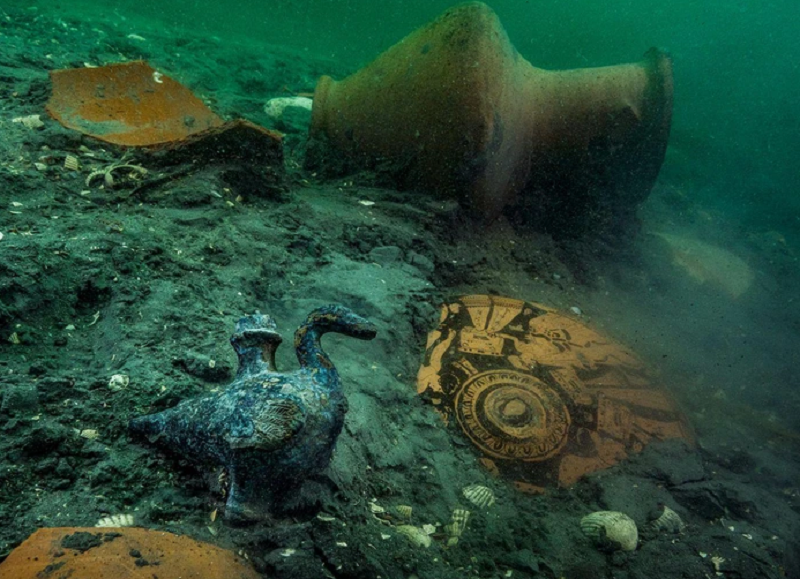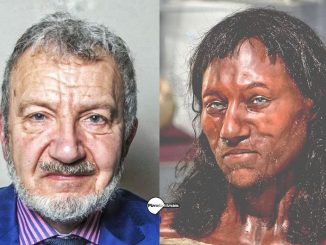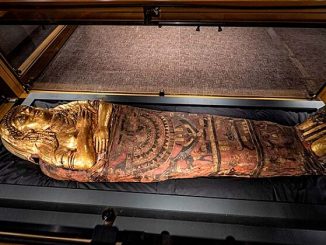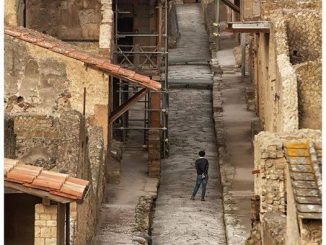The European Institute of Underwater Archeology (IEASM) announced the discovery of new “treasures and secrets” at a sunken temple in the Mediterranean Sea off the coast of Egypt.
According to CNN, a September 19 announcement said a group of underwater archaeologists, led by French marine archaeologist Franck Goddio, discovered many new things at the temple of Amun in the port city. ancient Thonis-Heracleion, located in the Gulf of Aboukir – Egypt.
The archaeological team investigated the city’s southern canal, where some of the temple’s giant stone blocks collapsed “during the great flood that took place in the middle of the second century BC”.
The Temple of Amun is where the Pharaohs came to “receive the power of world kings from the supreme gods of ancient Egypt” – according to the announcement.
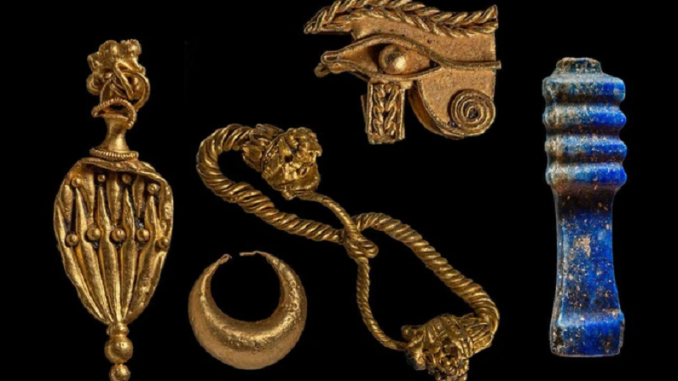
Several objects, gold jewelry and a lapis lazuli Djed column, a symbol of stability, were found. Photo: Hilti Foundation
Precious artifacts at the temple were unearthed, including silver ceremonial tools, gold jewelry and broken perfume or ointment bottles… IEASM wrote: “They witnessed wealth of this holy place as well as the piety of the former port city’s inhabitants”.
Located to the east of the temple, an area worshiping the Greek god Aphrodite was also discovered. Here, the archaeological team found bronze and ceramic artifacts.
This proves that the Greek group – allowed to settle and trade in this city during the time of the Saïte Dynasty Pharaohs (664 – 525 BC) – also had a place to worship their own gods.
In addition, the discovery of Greek weapons also demonstrates the existence of Greek mercenaries in the area. According to IEASM, they guard the entrance to the kingdom at the mouth of the Canopic branch of the Nile River – the largest and most suitable branch for ships.
An elaborate bronze duck-shaped vase sits among ceramic objects at the shrine of the Greek god Aphrodite in the ruins of Thonis-Heracleion. Photo: Hilti Foundation
Mr. Goddio, director of the excavation team and president of IEASM, said: “It is extremely moving to discover that such fragile objects can exist intact despite the brutality and severity of the great disaster.” deluge”.
The above excavations were jointly carried out by Mr. Goddio’s team and the Underwater Archeology Committee of the Egyptian Ministry of Tourism and Antiquities.
In addition to the above artifacts, the archaeological team also discovered underground structures “supported by very well-preserved wooden columns and beams dating from the 5th century BC”.
The ruins of the ancient city of Thonis-Heracleion were discovered by IEASM in 2000, currently located under the sea, about 7 km from the Egyptian coast. The city was for centuries Egypt’s largest port in the Mediterranean before Alexander the Great built the city of Alexandria in 331 BC.
“Sea level rise and earthquakes, followed by high tides, have caused multiple soil liquefaction events, dragging an area of about 110 square kilometers of the Nile Delta to the bottom of the sea, including Thonis-Heracleion” – written notice.
